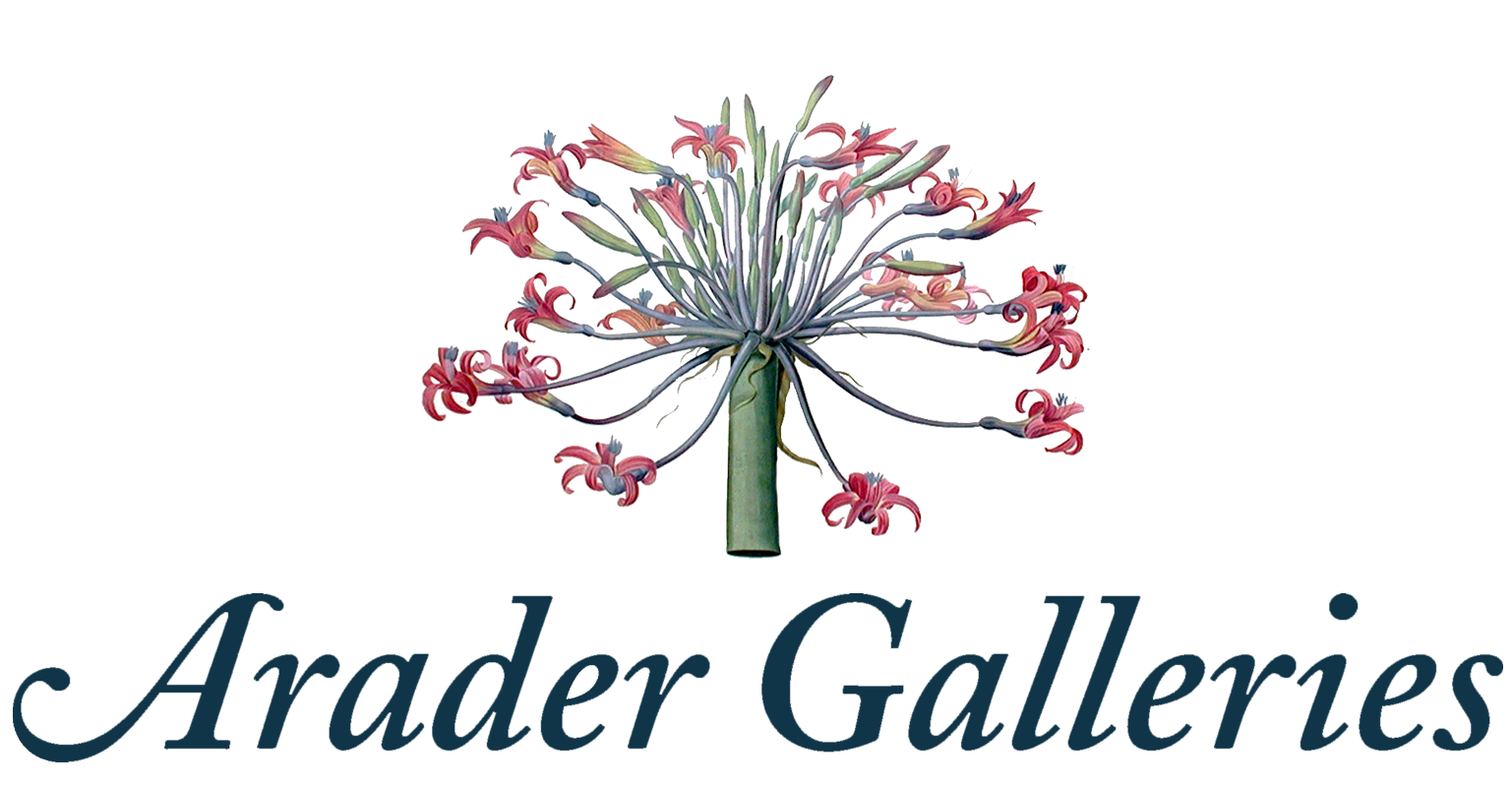Merian, Maria Sibylla
Maria Sibylla Merian (1647-1717)
From Metamorphosis Insectorum Surinamensium
Amsterdam: 1705
Watercolor transfer prints
Each with paper size: 20” x 14”
31” x 24” framed (gold leaf); or 29 1/2” x 23” framed (burled wood)
Maria Sybilla Merian (1647-1717) was born into a century of unparalleled change. The Thirty Years’ War, that had ravaged Europe since 1618, ended the year after her birth, and the resulting Treaty of Westphalia brought about new religious freedoms. This new era of Enlightenment allowed science to blossom. It was this atmosphere that such figures such as Sir Isaac Newton (1643-1727) was able to define the laws of gravity and George Buffon (1707-1788) advanced the evolution debate
by exploring the theory that all living creatures are derived from one species that has changed over time. The great English poet, Alexander Pope (1688-1744), summed up this spirit of discovery
perfectly, writing: “Know then thyself; presume not God to scan. The proper study of mankind is man.” With the new age of discovery, science more than ever before, came to depend upon the artist’s skill in illustration.
Maria Sibylla was born in Frankfurt, Germany on April 2, 1647 to the famous publisher, Matthias Merian, and his second wife, Johanna Sibylla Heim. At the age of three her father died, and one year later her mother married the Dutch painter, Jacob Marrell, also a resident of Frankfurt. He provided her with an early artistic training and also introduced her to natural history illustration. Merian not only concentrated upon the beauty of flowers, the majority of her compositions included insects, an unusual consideration for a woman of the 17th century. However, in her publication, Metamorphosis Insectorum Surinamensium, Maria Sibylla Merian was to confess: “From my youth onward I have been concerned with the study of insects. I began with silkworms in my native city, Frankfurt am Main; then I observed the far more beautiful butterflies and moths that developed
from other kinds of caterpillars.” Her ability to study certain caterpillars was aided by Marrell’s brother, a silk trader in Frankfurt.
While her fascination was most certainly real, for she was to travel with her daughter Dorothea to Surinam in 1699 specifically to record the insect life of the Dutch colony, it also provided her with a modicum of financial security. The excitement of discovery extended beyond the confines of scientists to that of the collector and his cabinet of curiosities. Eager to acquire the latest discoveries, these wealthy collectors employed artists to record their collections. Maria was acquainted with the Amsterdam collectors Nicholas and Jonas Witsen, and Livinus Vincent, the first of whom ensured that she received financial assistance from the city for her perilous journey to Surinam. She undoubtedly completed commissions for them and others.
These spectacular examples of her work are from one of a very few transfer-print watercolor volumes known to exist. Merian herself prepared the volume. After an uncolored print was made, she applied dampened paper to it, pressing by hand to create an image of the print in reverse. In this volume she chose to block out the plate numbers and then add by hand, to some images, numbers and notations. Merian then painstakingly watercolored the dried paper herself, ensuring that the colors were true to the specimens she had seen in South America, and also allowing her style to emerge with greatest clarity. The volume was not meant for sale, and its intended purpose cannot be known with any certainty. Perhaps it was created as a gift for a wealthy and important patron, perhaps Merian meant to keep it herself. What can be stated without a doubt is that these splendid images represent a unique opportunity to acquire original works by an artist who broke barriers as a woman, as a scientist and artist, and whose accomplishments are no less impressive
today than they were in her time.
5 products
Subscribe to our newsletter:
Location
Arader Galleries
1380 Main Street
Saint Helena, CA 94574
Hours
Monday - Friday: 9 am to 5 pm
Saturday - Sunday: 11 am to 5 pm
For any inquiries you can reach the gallery through phone or email:
Tel: 707-225-4571
Email: josephine.arader@gmail.com





